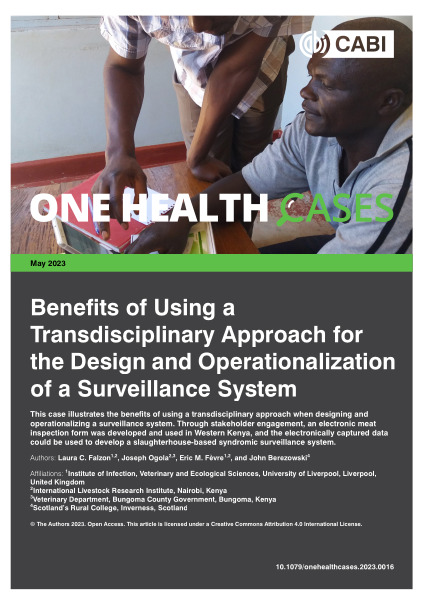Benefits of using a transdisciplinary approach for the design and operationalization of a surveillance system
Abstract
During the preparatory phase of a surveillance project in Western Kenya, it was noted that several animal health activities, including meat inspection, were recorded using paper-based forms. Through discussions with the meat inspectors and other slaughterhouse actors, an electronic meat inspection form was developed, tested, and used in two slaughterhouses in Bungoma County. The meat inspectors completed and submitted a form for every animal slaughtered at their facility over a 2.75-year period. In a feedback meeting with the meat inspectors and other stakeholders, areas for improvement were highlighted, such as the timely provision of feedback to the data providers, and the inclusion of data fields that allow for more detailed animal movement information. The meat inspectors remarked that the form made them feel appreciated and added value to their work as the data could be used to educate farmers on prevailing livestock conditions and provide economic incentives for disease control interventions. The data submitted via the electronic forms were of sufficient quality to be summarized and identify trends in the animal slaughterhouse throughput, as well as frequent reasons for meat condemnation and associated costs. These data could therefore set the foundation for a syndromic surveillance system based on slaughterhouse data. Other non-traditional data sources, such as livestock and meat transport certificates, could also be leveraged to create a post-farm animal health information system.

